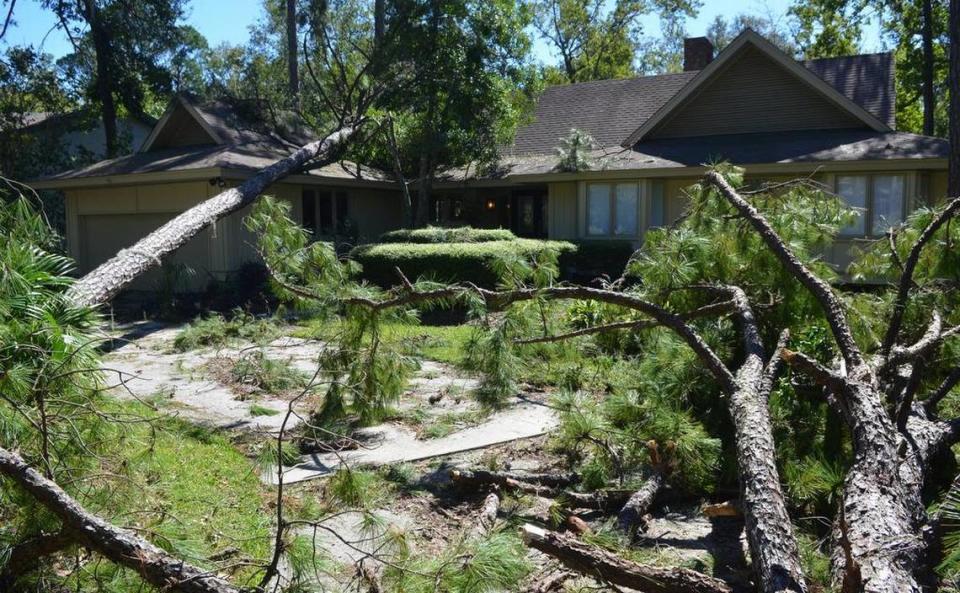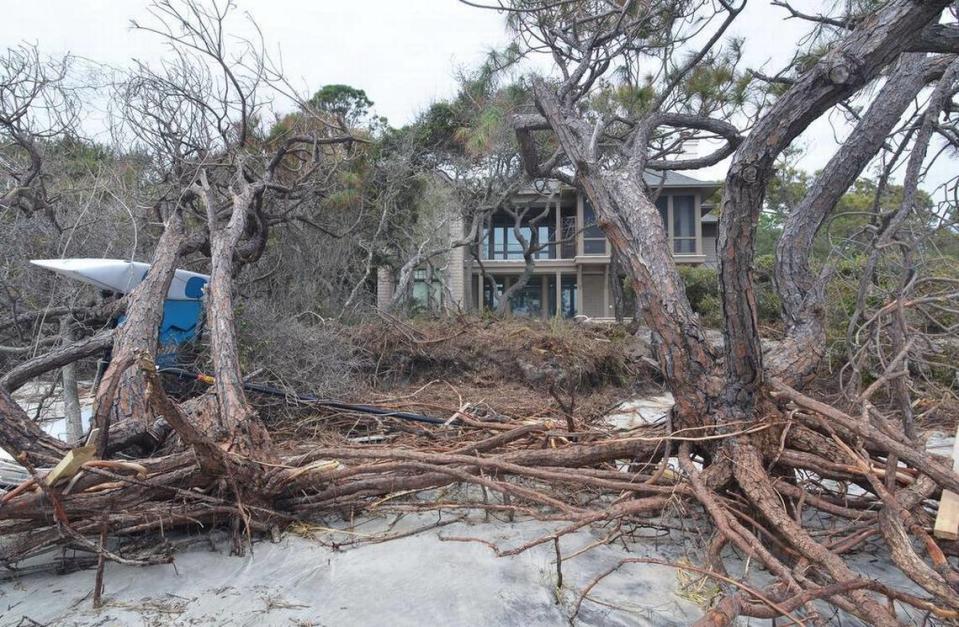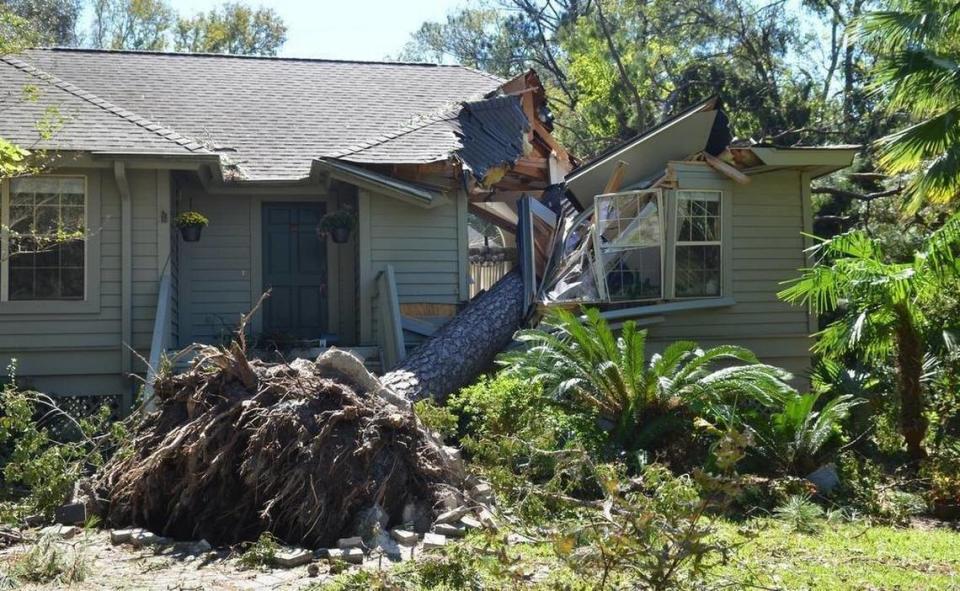A perfect storm: What’s to blame for Hilton Head’s skyrocketing home insurance premiums?
Homeowner insurance rates in the Hilton Head area are skyrocketing, adding to the area’s cost of living increases and forcing buyers to make tough financial decisions.
“They want your firstborn,” said Meg O’Toole Herman, an agent with Hilton Head’s Goosehead Insurance. She said rates are increasing anywhere from 20% to 70%.
William Voelkel, at Hilton Head Insurance and Brokerage, said that the rates are worse along the coastline and get better the further inland homes are.
The rate increases can’t be attributed to one single factor, but rather a perfect storm: reinsurance spikes, decreased coverage availability, rebuild cost increases, and reliance on Excess and Surplus Lines.
Voelkel said one Hilton Head client paid 63% more on their premium for the same coverage from $1,900 in 2022 to $3,100 in 2023. A Bluffton client fared better, paying 30% more from $2,471 in 2022 to $3,227 in 2023. Both homes were non-renewed by a carrier that suspended business in Beaufort County and had to be re-written with another carrier.
In the Hilton Head area, the cost of living is going up even without considering insurance rates. Median home sale prices went up 18% from $410,000 in 2021 to $485,000 in 2022. Some community transfer fees doubled or tripled in the past few years, and homeowners association fees are typically rising faster than the pace of inflation.
While a home’s sticker price is one of the first costs homeowners consider, the area’s insurance prices are coming as a last-minute shock to many, and oftentimes they come as property assessments, according to Peter Geary, a Realtor with RE/MAX Island Realty.
“It impacts somebody’s ability to finance (a home),” Geary said. “If they don’t know about something coming up and all of a sudden you get into the closing process and this new fee comes up.”

Reinsurance
It’s easy to point towards a newly installed pool or rapidly deteriorating roof as the reason for escalating insurance costs, but individual risk factors are only part of the cause for increasing rates. Not to mention rate increases are countywide, not just for a neighbor with a trampoline.
Herman said part of the increase is driven by reinsurance, which is the insurance that insurance companies buy to mitigate some of their risks.
She said over the past couple of years reinsurance companies took “catastrophic loses” punctuated by Hurricane Ian. Though less severe than some other hurricanes, Hurricane Ian was the third costliest in U.S. history with more than $112 billion in damage, according to the National Hurricane Center.
Reinsurers also consider high inflation, interest rate hikes, and even that they’re losing money as a result of war-related claims from the Russia-Ukraine conflict.
“All this comes together and reinsurers raise their rates,” Herman said. “They raised them so much that other carriers like insurance companies can’t afford to offer insurance here so they leave and some go out of business because they have to liquidate.”
Herman listed 11 insurance companies that either liquidated, departed the Hilton Head area market, or didn’t renew policies in the last year. She listed six that are on hold for new business.
“It’s kind of like a seller’s market in real estate,” she said. The still operating insurance companies can then raise rates and tighten underwriting guidelines, for example, guidelines on how old a roof can be for them to insure the home.

They’re also a lot less likely to be standard market carriers, also called admitted carriers, which have been approved by the state Department of Insurance, according to Herman. These carriers must follow state regulations on how much they can charge and what risks they can and cannot cover.
Instead, they’re non-admitted insurers, also known as Excess and Surplus Lines insurance companies, which don’t follow the same regulations.
“They solve a lot of problems for us. They take risks that are not so standard,” she said. “(But), they’re a little more free to change rates and come in and out (of the market).”
The Wind Pool
The South Carolina Wind and Hail Underwriting Association, often referred to as the Wind Pool, can also be used as a measure of how competitive the private market is. The SCWHUA is the residual property insurance market in South Carolina. It is an association of insurance companies that offer wind and hail property insurance to those in coastal areas who can’t find an insurer to cover their home through the standard insurance market.
Though the number of homeowners in Beaufort County who weren’t able to find coverage in the private marketplace has gone down from 10,805 in 2011, they’ve gone up in the past year, according to SCWHUA. It means that the private market is more competitive and offers less coverage than the year before.
1,993 homeowners relied on SCWHUA for home insurance in 2021 compared to 2,050 homeowners in 2022. The average premium went up about 15% between the two years from $2,946 to $3,384.
High supply and labor costs
The same labor shortage making it difficult to get a served at a restaurant is also impacting home insurance rates.
“There’s been inflation with materials and labor so anytime there is a claim it’s just going to cost more to make those repairs,” Insurance Information Institute Director of Communications Mark Friedlander said. The institute is a U.S. industry association that has worked to improve public understanding of insurance since 1959.
Across the United States, the Associated Builder and Contractors projected the construction industry needs to attract 546,000 new workers in 2023 in addition to the normal hiring pace to meet the expected demand for labor. A tight job market increases the cost of labor and to cover the increasing cost of hiring workers to make repairs, insurance agencies are raising deductibles.
It’s no Florida
Home insurance prices are a cycle, Herman said, and it will take time to go around.
“Most of the industry experts feel like it may be 18 to 24 months away before we start to see a lot more competition more available, more capacity,” she said.
SCWHUA Consumer Representative and Hilton Head Realtor Andy Twisdale said that despite prices rising, it hasn’t been an issue to get insurance.

“There is insurance to be had,” he said, unlike places like Florida where homeowners are scrambling for coverage.
When shopping for insurance, homeowners are encouraged to quotes from multiple companies, and the South Carolina Department of Insurance can help find property insurance for those in need by connecting them with insurance agents and companies in their area.

